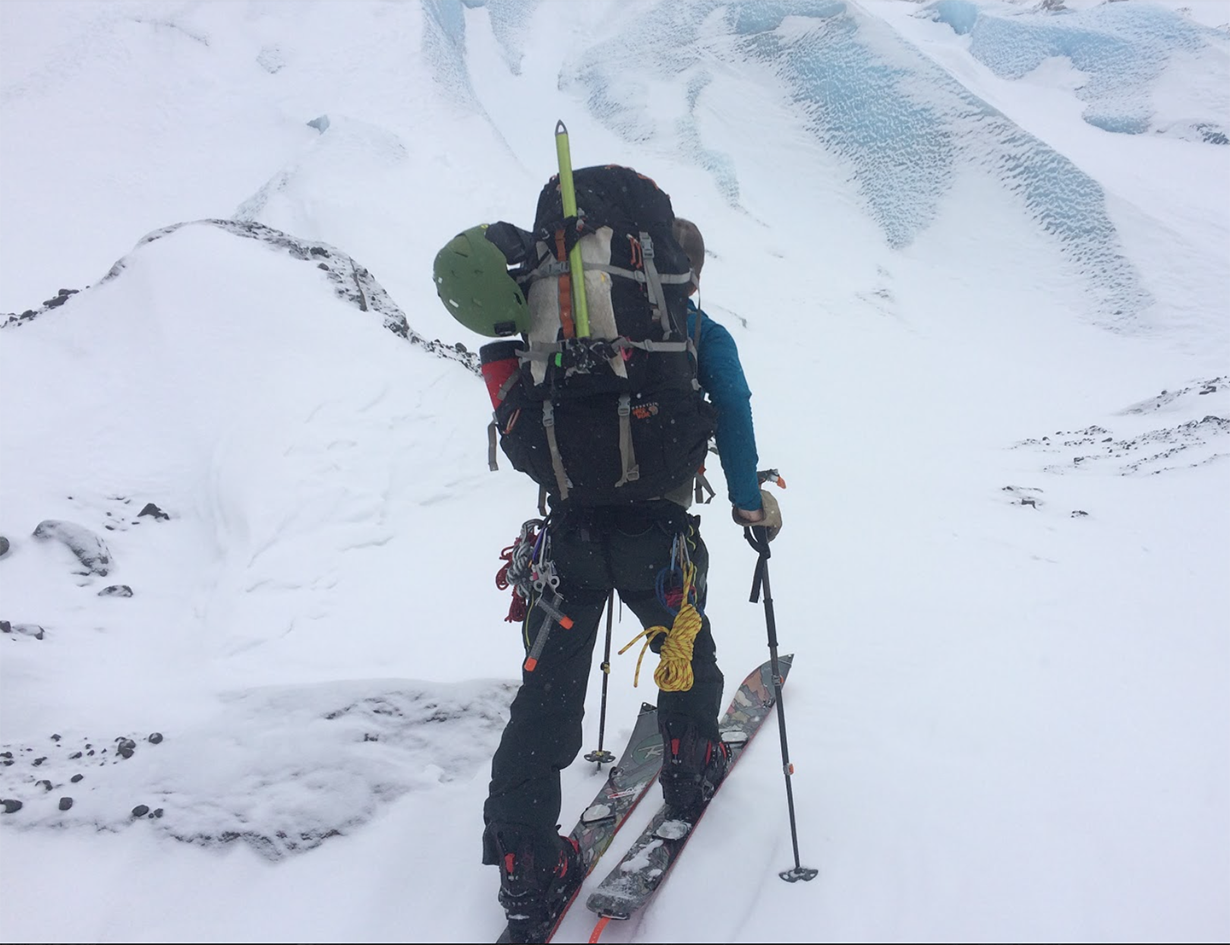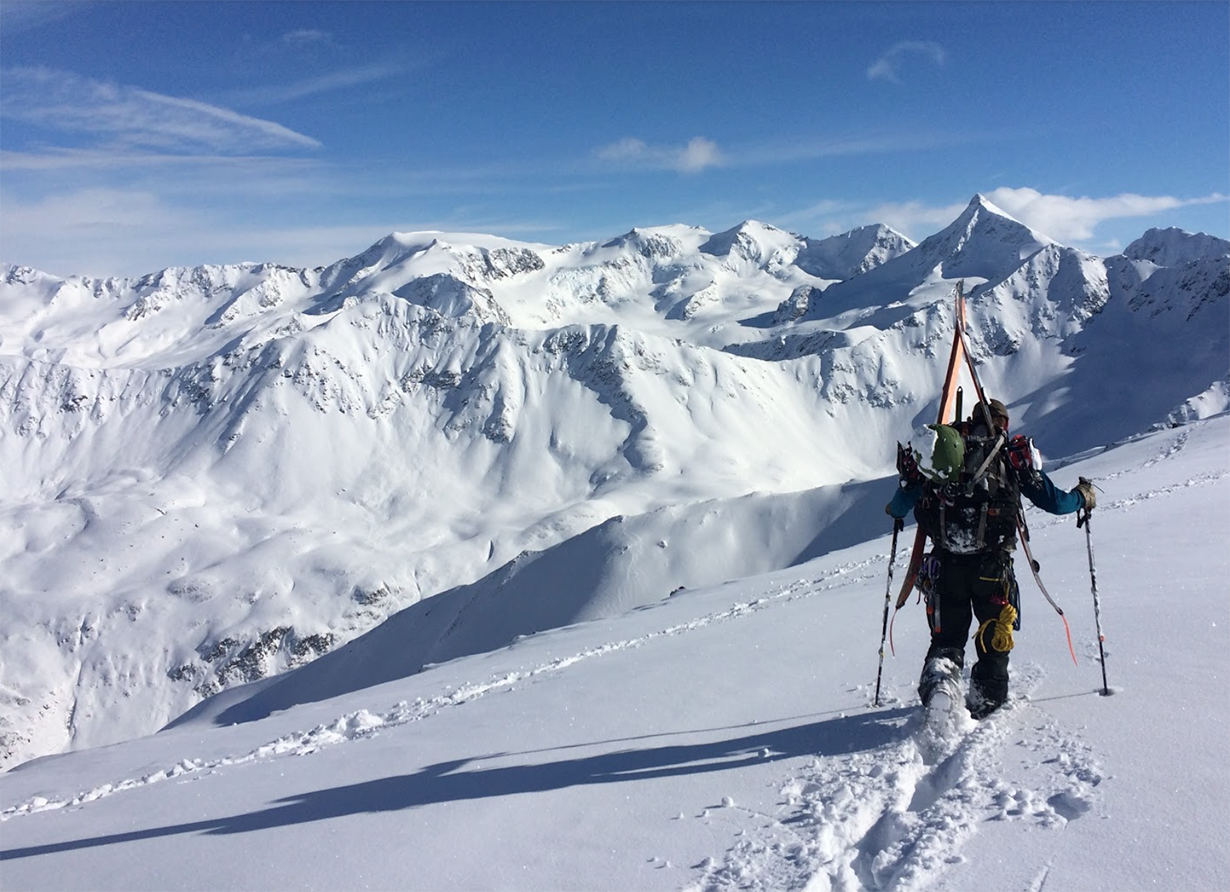Touring / Climbing
The Boa Conda ankle harness, although prone to failure, is a nice feature which tightens the ankle chassis at the top of the skin track within seconds, or loosens it up for a more comfortable skin up. I only wish the adjustment knob was lower profile and built stronger. Compared to the Fitwell Backcountry, the Aspect tours much smoother (longer strides) and feels more comfortable on the skin track. This comfort comes at a compromise, as the Fitwells are much more responsive, with unrivaled lateral stiffness and ultimately feel more responsive while skiing and skinning. For 80% of situations, the Aspect will be more than adequate, but for those who use splitboarding as a means to access rugged alpine, mountaineering-style lines, the Fitwell may be a better choice.

The same can be said for crampon performance. The Aspect excels in aluminum or steel crampons for glacier travel and even some water/blue ice, but the Backcountry is a better option for anything technical that would require alpine-style mixed-climbing.
The power strap at the top of the boot and BOA Conda ankle lacing allow for quick transitions from a looser fit for touring, to a tighter, stiffer feel for riding. The back of the boot, near the calf region, is made of a soft leather that prevents calf bite and feels very comfortable touring and riding. The power strap at the shin also does a very nice job of stiffening the boot up for more responsive edging and more efficient energy transfer.
Wearing the Aspect, I can really tell the difference between ride mode and tour mode on both the Karakoram Prime Carbons and Spark Surge, enabling a longer stride. On the other hand, the Fitwell Backcountry is so stiff that I haven’t been able to really tell the difference between the bindings’ tour/ride modes since the back of the boot doesn’t flex much.
Although the Vibram sole pattern varies between the Aspect, Independent BC and Backcountry, they have all performed very well on both rock and snow.
Riding
While using boots that are designed for splitboarding and general backcountry use, I haven’t found anything that rides as well as the Aspect across the full spectrum of terrain. While the Fitwell Backcountry is a stiffer, higher performance boot, I’ve found that most of the time the Aspect is sufficient power-wise, and it allows for a more freeride/freestyle approach to the mountains. For riding trees, natural features, jumps, or steeps, the Aspect is soft enough to huck, yet stiff enough to lay down fast, powerful carves and blast through chunder.
The Aspect feels very secure in the backcountry using Karakoram and Spark splitboard bindings, as well as at the resort with the Arbor and Unions. The Aspect seems to have a lower profile than the Independent BC’s and feel comfortable all day in the ankle straps. Even while riding at the resort, the Aspect has enough padding and support to avoid discomfort on the ride up the chairlift, while not feeling bulky or unresponsive on the descent.
The Aspect is a great powder-oriented boot but is still rigid enough to charge through variable, dense snow. Slashing turns and blowing up powder clouds feels natural with the snappy flex of the boots spine. If the boot feels too soft at the end of the day, the Boa closure and powerstrap can be quickly tightened. However, for harder, bulletproof conditions, the Fitwell Backcountry edges better due to its stiffness.
Construction and Durability
The Aspect seems to be designed to withstand hard use and many miles. The rugged Vibram sole is extremely durable, and hasn’t been phased by snow machine running boards, binding rub, or crampon use. I really like the tough rubber K2 used around the toebox. Although it isn’t as burly as the Fitwell Backcountry’s toebox, it is considerably tougher than the Deeluxe Independent BC, and doesn’t deform as easily while using crampons.
K2 took a unique approach with their Endo construction. Basically, the back of the boot has a urethane endoskeleton which is supposed to offer solid support, yet allow the boot to flex without blowing seams or tearing the boot after extended use. Although I haven’t spent enough days in the boot to tell if it will prolong their life, I do know that this part of the boot was the first thing to go on my Deeluxe Independent BC, amongst countless other boots. It seems that flexing while turning and touring, in addition to the constant pressure of the ankle strap, tends to blow out the ankle seams.
As many of my boot reviews emphasize, I am a huge supporter of traditional laces and strongly opposed to quick lacing options, especially in a backcountry boot. Even though the Boa Conda ankle harness is the only mechanized piece on the boot, I was very concerned about the durability from day one — a concern that ended up being legitimate.
My apprehension regarding the Boa system started a few years ago on a different boot during a 25-day trip to the Alaska Range, where we toured 35+ miles and skied various objectives along the way. While on the trip, I witnessed first-hand how bad a quicklace or Boa system failure could be. Our team all had different Deeluxe boots: the Independent BC (traditional laces), Spark Summit (Boa ankle support and quick lacing), and XV (quick lacing). Less than 2 weeks into the trip, I (with the Independent BC) was the only one left with a functional boot. Plastic quick lace mechanisms break, and Boa knobs snap off, which is why I try to stay away from them for serious, extended outings. (With traditional laces, the worst case scenario is simply replacing a lace, as opposed to gluing knobs back on or wrapping p-cord around the outside of the boot in an attempt to make it snug and functional.)
And the Boa Conda on the Aspect did fail after a few days of use. I noticed the knob had broken while I was driving my snowmachine with my splitboard on the rack. Although the Vibram sole did an excellent job holding up to the rigors of the metal running boards, the Boa Conda system did not. Will it fail while just splitboarding or using crampons? I can’t say for sure, although I have seen older styles of the Boa (also located on the outside of the boot) snap off during routine use.

On the plus side, the Boa was still functional throughout the day that it broke, and I still use the boots now, with the knob super-glued back on. This is a warranty issue and K2 will replace the boot, but I honestly don’t want to send the boots back and be without them for the rest of the season. I’ll confirm how the customer service is this summer after I’ve retired my splitboard for the season, but will keep riding them for now since the knob is still functional.
Who’s It For?
The Aspect is perfect for any splitboarders who scramble or need crampons for glacial use on the way up, yet want a boot that feels soft and snappy enough to jib the mountain on the way down. The Vibram sole inspires confidence while setting a boot pack and is tough enough to withstand use with crampons, Verts, or snowmachine running boards. If you’re looking for an all-round splitboarding boot, the Aspect is an excellent choice.
Bottom Line
Unlike some its competitors, the K2 Aspect isn’t just a mountaineering boot that can be used to snowboard. Instead, it’s a great snowboard boot that also performs well in more serious and technical terrain. If climbing is more of a goal than snowboarding, the Fitwell Backcountry may be a better choice. But if you’re climbing up primarily for the enjoyment of riding down while seeking out and jibbing natural features, the K2 Aspect is hard to beat.

Great write up!
Any report on how the customer service / warranty side of K2 is?
Cheers
Awesome. Thanks for the detailed review! Would you recommend it if you did 50/50 resort/splitboard riding?
Great review! I’ve been riding the K2 Aspect 50/50 resort and backcountry for 3 years with out issues. I even climb Mt Hood via Pearly Gates with these boots they are very compatible with Grivel semiautomatic crampons and the riding down was awesome like a real snowboard boot!